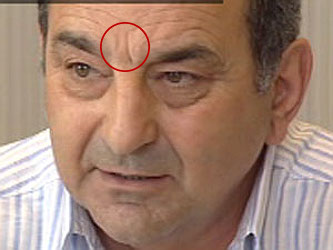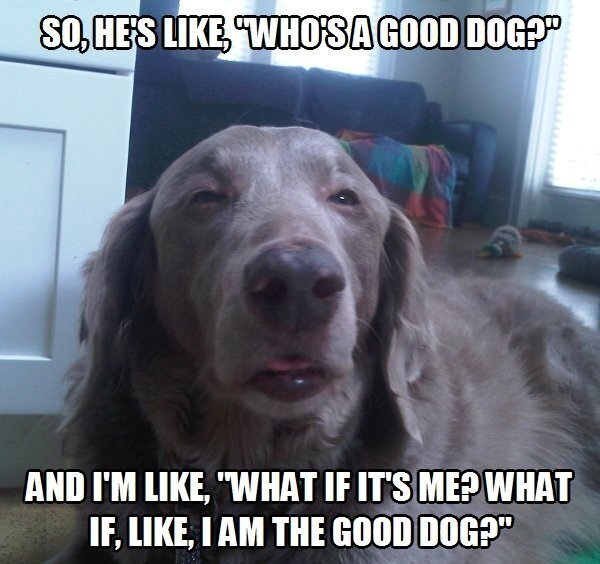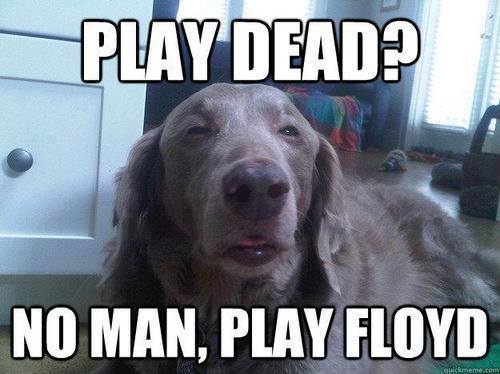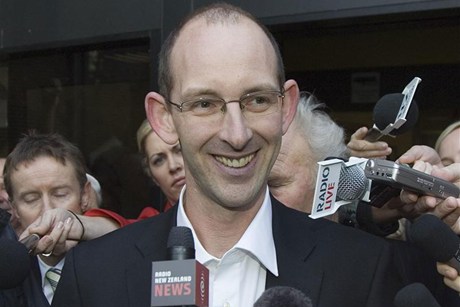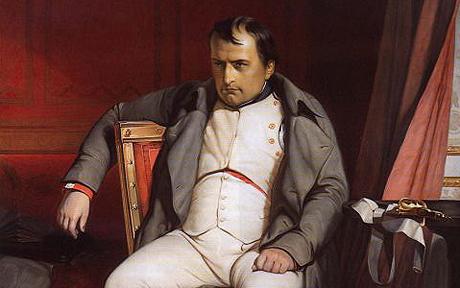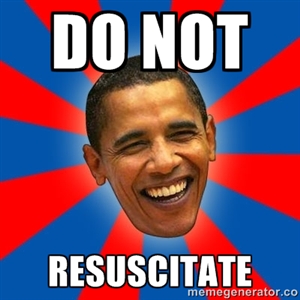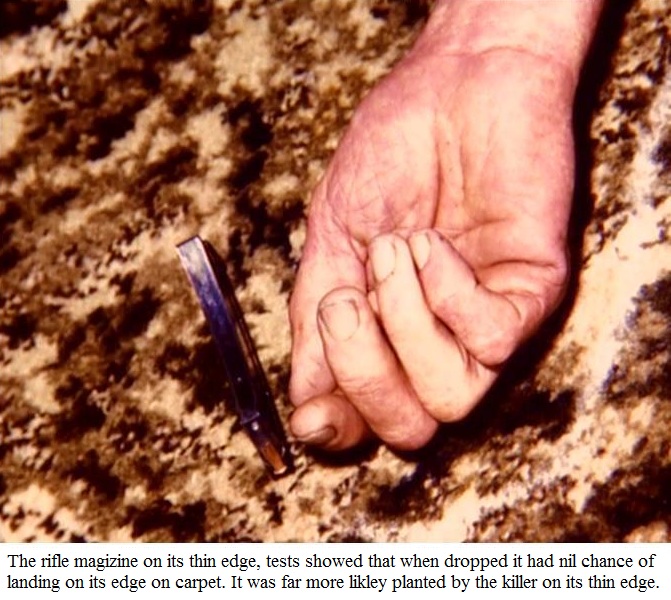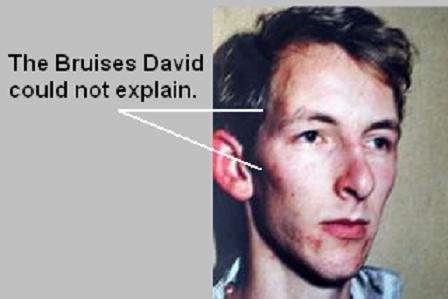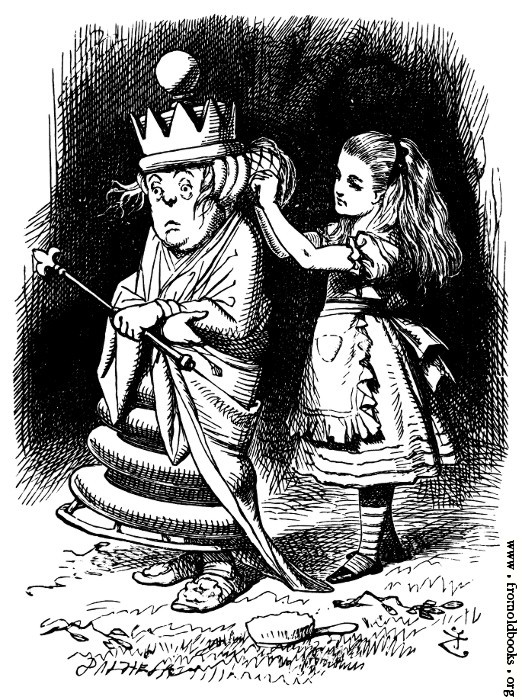“The marks in question are not cuts, are not abrasions, are not burns, are not damage. And that is not a matter of opinion.” – Joe Karam
All posts by Richard
Vote AGAINST the Psychoactive Substances Bill
Dear MP,
Please vote AGAINST the Psychoactive Substances Bill.
Animals must not experience suffering for economic or entertainment reasons.
It is morally abhorrent to me, as it is to John Banks and all right-thinking people, “that animals will be in pain and will die all in the name of people wanting to take drugs on the weekend.”
Not in my name.
Yours sincerely,
Richard Goode
Christian libertarian (who wants to take drugs on the weekend)
“Stoner Dog” is just an Internet meme. Let’s keep him that way!
Please email your MPs today with your message, here is a list of names and email addresses.
ACT PARTY MPs:
John Banks <john.banks@parliament.govt.nz>
(OK, so John Banks doesn’t need any convincing, but you could try to convince him it would be a good idea to legalise cannabis. He’s been known to change his mind on human rights issues before.)
GREEN PARTY MPs:
Russel Norman <russel.norman@parliament.govt.nz>
Metiria Turei <metiria.turei@parliament.govt.nz>
Steffan Browning <steffan.browning@parliament.govt.nz>
David Clendon <david.clendon@parliament.govt.nz>
Catherine Delahunty <catherine.delahunty@parliament.govt.nz>
Julie Genter <julie.genter@parliament.govt.nz>
Kennedy Graham <kennedy.graham@parliament.govt.nz>
Kevin Hague <kevin.hague@parliament.govt.nz>
Gareth Hughes <gareth.hughes@parliament.govt.nz>
Jan Logie <jan.logie@parliament.govt.nz>
Mojo Mathers <mojo.mathers@parliament.govt.nz>
Denise Roche <denise.roche@parliament.govt.nz>
Eugenie Sage <eugenie.sage@parliament.govt.nz>
Holly Walker <holly.walker@parliament.govt.nz>INDEPENDENT MPs:
Peter Dunne <p.dunne@ministers.govt.nz>
Brendan Horan <brendan.horan@parliament.govt.nz>LABOUR PARTY MPs:
Jacinda Ardern <jacinda.ardern@parliament.govt.nz>
Carol Beaumont <carol.beaumont@parliament.govt.nz>
David Clark <david.clark@parliament.govt.nz>
Clayton Cosgrove <clayton.cosgrove@parliament.govt.nz>
David Cunliffe <david.cunliffe@parliament.govt.nz>
Clare Curran <clare.curran@parliament.govt.nz>
Lianne Dalziel <lianne.dalziel@parliament.govt.nz>
Ruth Dyson <ruth.dyson@parliament.govt.nz>
Kris Faafoi <kris.faafoi@parliament.govt.nz>
Darien Fenton <darien.fenton@parliament.govt.nz>
Phil Goff <phil.goff@parliament.govt.nz>
Chris Hipkins <chris.hipkins@parliament.govt.nz>
Raymond Huo <raymond.huo@parliament.govt.nz>
Shane Jones <shane.jones@parliament.govt.nz>
Annette King <annette.king@parliament.govt.nz>
Iain Lees-Galloway <iain.lees-galloway@parliament.govt.nz>
Andrew Little <andrew.little@parliament.govt.nz>
Moana Mackey <moana.mackey@parliament.govt.nz>
Nanaia Mahuta <nanaia.mahuta@parliament.govt.nz>
Trevor Mallard <trevor.mallard@parliament.govt.nz>
Sue Moroney <sue.moroney@parliament.govt.nz>
Damien Oconnor <damien.oconnor@parliament.govt.nz>
David Parker <david.parker@parliament.govt.nz>
Rajen Prasad <rajen.prasad@parliament.govt.nz>
Grant Robertson <grant.robertson@parliament.govt.nz>
Ross Robertson <ross.robertson@parliament.govt.nz>
David Shearer <david.shearer@parliament.govt.nz>
Su’a William Sio <sua.william.sio@parliament.govt.nz>
Maryan Street <maryan.street@parliament.govt.nz>
Rino Tirikatene <rino.tirikatene@parliament.govt.nz>
Phil Twyford <phil.twyford@parliament.govt.nz>
Louisa Wall <louisa.wall@parliament.govt.nz>
Meka Whaitiri <meka.whaitiri@parliament.govt.nz>
Megan Woods <megan.woods@parliament.govt.nz>MANA PARTY MP:
Hone Harawira <hone.harawira@parliament.govt.nz>
MAORI PARTY MPs:
Pita Sharples <pita.sharples@parliament.govt.nz>
Tariana Turia <tariana.turia@parliament.govt.nz>
Te Ururoa Flavell <teururoa.flavell@parliament.govt.nz>NATIONAL PARTY MPs:
Amy Adams <amy.adams@parliament.govt.nz>
Shane Ardern <shane.ardern@parliament.govt.nz>
Chris Auchinvole <chris.auchinvole@parliament.govt.nz>
Kanwaljit Singh Bakshi <bakshi.mp@parliament.govt.nz>
Maggie Barry <maggie.barry@parliament.govt.nz>
David Bennett <david.bennett@parliament.govt.nz>
Paula Bennett <paula.bennettmp@parliament.govt.nz>
Chester Borrows <chester.borrows@parliament.govt.nz>
Simon Bridges <simon.bridges@parliament.govt.nz>
Gerry Brownlee <gerry.brownlee@parliament.govt.nz>
Cam Calder <cam.calder@parliament.govt.nz>
David Carter <david.carter@parliament.govt.nz>
Jonathan Coleman <jonathan.coleman@parliament.govt.nz>
Judith Collins <office@judithcollins.co.nz>
Jacqui Dean <jacqui.dean@parliament.govt.nz>
Bill English <bill.english@parliament.govt.nz>
Chris Finlayson <c.finlayson@parliament.govt.nz>
Craig Foss <craigfoss@backingthebay.co.nz>
Paul Foster-Bell <paul.foster-bell@parliament.govt.nz>
Paul Goldsmith <paul.goldsmith@parliament.govt.nz>
Jo Goodhew <jo.goodhew@parliament.govt.nz>
Tim Groser <tim.groser@parliament.govt.nz>
Nathan Guy <nathan.guy@parliament.govt.nz>
Claudette Hauiti <claudette.hauiti@parliament.govt.nz>
John Hayes <john.hayes@parliament.govt.nz>
Phil Heatley <phil.heatley@parliament.govt.nz>
Tau Henare <tau.henare@parliament.govt.nz>
Paul Hutchison <paul.hutchison@parliament.govt.nz>
Steven Joyce <steven.joyce@parliament.govt.nz>
Nikki Kaye <nikki.kaye@parliament.govt.nz>
John Key <john.key@parliament.govt.nz>
Colin King <colin.kingmp@parliament.govt.nz>
Melissa Lee <melissa.lee@parliament.govt.nz>
Sam Lotu-Iiga <peseta.sam.lotu-iiga@parliament.govt.nz>
Tim Macindoe <tim.macindoemp@parliament.govt.nz>
Todd McClay <todd.mcclay@parliament.govt.nz>
Murray McCully <murray.mccully@parliament.govt.nz>
Ian McKelvie <ian.mckelvie@parliament.govt.nz>
Mark Mitchell <mark.mitchell@parliament.govt.nz>
Alfred Ngaro <alfred.ngaro@parliament.govt.nz>
Simon Oconnor <simon.oconnor@parliament.govt.nz>
Hekia Parata <hekia.parata@parliament.govt.nz>
Jami-Lee Ross <Jami-Lee.ross@parliament.govt.nz>
Eric Roy <eric.roy@parliament.govt.nz>
Tony Ryall <tony.ryall@parliament.govt.nz>
Mike Sabin <mike.sabin@parliament.govt.nz>
Katrina Shanks <katrina.shanks@parliament.govt.nz>
Scott Simpson <scott.simpson@parliament.govt.nz>
Nick Smith <nick.smith@parliament.govt.nz>
Lindsay Tisch <lindsay.tisch@parliament.govt.nz>
Anne Tolley <anne.tolley@parliament.govt.nz>
Chris Tremain <chris.tremain@parliament.govt.nz>
Louise Upston <louise.upston@parliament.govt.nz>
Nicky Wagner <nicky.wagner@parliament.govt.nz>
Kate Wilkinson <kate.wilkinson@parliament.govt.nz>
Maurice Williamson <maurice.williamson@parliament.govt.nz>
Michael Woodhouse <michael.woodhouse@parliament.govt.nz>
Jian Yang <jian.yang@parliament.govt.nz>
Jonathan Young <jonathan.young@parliament.govt.nz>NEW ZEALAND FIRST MPs:
Asenati Lole-Taylor <asenati.lole-taylor@parliament.govt.nz>
Tracey Martin <tracey.martin@parliament.govt.nz>
Denis O’Rourke <denis.orourke@parliament.govt.nz>
Winston Peters <winston.peters@parliament.govt.nz>
Richard Prosser <richard.prosser@parliament.govt.nz>
Barbara Stewart <barbara.stewart@parliament.govt.nz>
Andrew Williams <andrew.williams@parliament.govt.nz>
Thank God for the Greens
Credit where credit’s due. Credit is due to the Greens—in particular, to Green MPs Kevin Hague, Mojo Mathers and Metiria Turei—for their input into the Psychoactive Substances Bill, which has its third and final reading on Thursday.
I endorse the Green Party minority view on animal testing. Here it is.
Animal testing
The introduction of a requirement that psychoactive substances are proven to be relatively safe before being sold in New Zealand inevitably creates the requirement for a whole new area of product safety testing. It is unsurprising that this has given rise to very significant concern from New Zealanders who oppose the cruel treatment of animals and who believe that testing of these products on animals in order to establish safety is unnecessary and, indeed, inferior to alternative methods. This view has widespread public support, as public opinion polls on the subject have demonstrated, and many individuals and organisations received encouragement from the Minister and others to express their concerns in submissions to the select committee.
However, on 8 May 2013 the Health Committee Chair ruled that all submissions received on the subject of animal testing were outside the scope of the bill, and these submissions were returned to those who made them without being considered. By a majority the committee decided to reject a Green Party motion to hear evidence from these submitters even if their submissions were out of scope. It is the Green Party’s very strong view that both of these decisions were wrong.
The Clerk of the House had provided advice that amendments to the bill that sought to outlaw product testing on animals were out of scope. However, nearly all of the submissions that were rejected raised issues that could have been addressed by an amendment to the bill to prohibit the use of information derived from animal testing in an application for a licence. The Clerk has advised that such an amendment would clearly be in scope, and the Green Party believes that it was therefore manifestly wrong to refuse to hear public submissions on the matter.
Belatedly the committee did receive advice from the chair of the Interim Psychoactive Substances Expert Advisory Committee, which had been asked by the Minister to comment on the animal testing issues, but which also did not have access to the submissions that had been rejected by the Health Committee chair. That advice was that the interim committee does not believe substances can be established to be low risk without animal testing. This effectively introduces a requirement that there be animal testing data for licence applications, and this new requirement has been introduced entirely without any views from the general public, animal welfare organisations or experts (except those who happen to be on the interim committee).
The Green Party believes this to be profoundly unsatisfactory. In our view, with the initial decision to reject these submissions having been shown to be in error, the correct course of action would have been to reopen submissions on this specific matter.
In the absence of a select committee hearing these submissions, the Green Party invited those individuals and organisations who wished to have their voice heard to do so in a separate hearing. We found as follows:
Non-animal tests are available and more accurate
Evidence was heard that many countries do not use animal testing for pre-clinical trials for safety because the results from non-animal testing are more reliable. The New Zealand Anti-Vivisection Society (NZAVS) said that in 2008 the United States Environmental Protection Agency, the National Institute of Health, and the Food and Drug Administration started a process to replace all toxicology testing on animals with non-animal techniques to produce results that are more relevant to humans.
Submitters talked about other countries that use these non-animal testing programmes as a preference to animal testing. Evidence was presented that the data from animal testing was actually less reliable in safety testing than non-animal testing. It was argued that if the bill allows for the lower quality data from animal testing to be acceptable evidence of safety then human health would be put at risk.
NZAVS gave evidence about the Ministry of Health’s proposed testing regime and outlined in detail the non-animal testing options that are available to provide an adequate, if not superior, guarantee of safety.
A safety testing regime would include four stages:
•manufacturing and controls information
•preclinical toxicology studies
•human clinical studies
•post registration surveillance
It is this pre-clinical testing where animal testing would be used.
The initially proposed pre-clinical testing involves four proposed parts, each of which has well regarded non-animal testing options.
Type of testing Non-animal option Acute toxicity
•Ames Test
•Neutral Red Uptake Assay
•In vitro micronucleus assay as required by Health Canada
•3D models with cultured human cells
•Computer models
Repeat dose toxicity
•Various in vitro human cell line studies e.g. liver, lungs, bone marrow (tests for effects on the immune system)
•Quantitative Structure-Activity Relationship (QSAR) computer modelling
Toxicokinetic investigations
•Cell line tests
•In vitro absorption tests e.g. Caco-2 cells
•Computer modelling
•In vitro assays on hepatocytes (liver cells)
•Physiologically Based Toxicokinetic (PBTK) modelling
Genotoxicity
•Ames test
•In vitro cell gene mutation test
•In vitro chromosomal aberration test
•In vitro cell micronucleus test
New Zealand’s international reputation is at risk
It was argued by submitters that New Zealand is known as an innovative country with a reputation for good animal welfare. Submitters said that developing legislation which allows for unnecessary animal testing will damage this reputation, especially given that there is an international trend towards avoiding animal testing wherever possible. SAFE submitted that this is an opportunity to avoid risking our reputation and to enhance our reputation as an innovative and ethical country.
Submitters also gave evidence that other countries are looking to New Zealand’s development of regulation of psychoactive substances as a potential model for their own regulation. Some of these countries also do not allow animal testing of recreational drugs. If they choose to follow the model developed in this bill as it stands they will adapt it to fit their bans on animal testing of recreational drugs.
NZAVS gave evidence gained from an Official Information Act request of correspondence between the chair of the National Animal Welfare Advisory Committee and her equivalent in the United Kingdom that showed the UK ban on animal testing would also apply to psychoactive substances.
Animal testing is ethically and morally questionable
One submission from an animal rescue organisation, Helping You Help Animals (HUHA), talked about the pain and discomfort that these sorts of tests inflict on animals. Their organisation was involved with rescuing dogs from an animal testing facility and they witnessed serious damage and harm to those animals.
They spoke about their experiences of working with some people who carry out animal testing who had been overexposed to animal suffering and had lost their empathy when it came to the animals under their care.
Submitters told the hearings that unless it was ruled out in the bill, then animal testing would most likely be carried out in other countries, some of which have no animal welfare regulations and so the conditions can be assumed to be worse.
A number of countries already ban non-medical animal testing from an ethical standpoint. Toxicity testing is particularly painful experimentation. Submitters argued that the consideration of this bill is the chance for New Zealand to draw an ethical line on this issue.
Cost implications of non-animal testing
The cost of alternatives to animal testing is significantly higher. Because the cost of safety testing for a product will be carried by the manufacturers, not the Government, submitters argued that this higher cost of non-animal testing creates an incentive for animal testing to be used.
In fact, the point was made that if the bill does not rule out the use of data from animal testing then the cost difference will ensure that manufacturers use the cheapest method to provide evidence, and that will be animal testing regardless of the quality of that evidence.
Submitters spoke about the dominance of animal testing in the industry in New Zealand—it is the norm, rather than a last resort. Evidence was received to show that this is also the case in some countries such as China where a large amount of contract animal testing is undertaken.
There was evidence presented by submitters that, if data from animal testing is ruled out, businesses will adapt their practices and the cost of non-animal testing will drop as demand for these tests increases and capacity to undertake these tests develops.
Recommendation
The Green Party recommends that an amendment should be made to the Psychoactive Substances Bill to exclude the use of new information gained through animal testing as evidence in determining the safety of an application.
(Disclaimer. I’m not a big fan of the Greens as a general rule. Their economic and environmental polices are whack. A Green government would be ruinous for New Zealand. But, at times like this, I’m very glad that the Greens have a Parliamentary presence.)
Restore Christchurch Cathedral
Christchurch is not my city, and (although nominally an Anglican) Christchurch Cathedral is not my church. Also, I have little money to contribute to any restoration project that goes ahead. Ultimately, it’s not my decision to make. But I think we should restore Christchurch Cathedral.
Late yesterday afternoon my son took me to see the centre of Christchurch. We parked on Manchester Street. I didn’t even recognise it. Christchurch is a city of rubble and parking lots. The devastation is immense. Nearly two and a half years after the February 2011 earthquake that killed 185 people, restoration of the CBD has hardly even started. I was moved to tears. It’s heartbreaking, and I’m a Wellingtonian.
The Cathedral is the heart of Christchurch. I think it would be good for the people of Christchurch to see the Cathedral restored. If it’s what the Anglican Diocese of Christchurch wants, I hope they restore the Cathedral to its former glory sooner rather than later.
Also in The Weekend Press, Mayor Parker quits.
But not with a hammer.
With a Winchester 490 .22 semi-automatic fitted with a silencer.Never ascribe to malice that which is adequately explained by incompetence
Never ascribe to malice that which is adequately explained by incompetence
The adage has been widely attributed to Napoleon Bonaparte. It is also known as Hanlon’s razor.
When it comes to the Bain murders, there are many who are in blatant violation of this adage, including some for whom I have inordinate fondness, admiration and respect. For example
This Travisty of Justice … the conviction of Daivid Bain… is what happens when you convict some one on circumstantial evidence and a bogus police fabricated account of events.
and
the Police [had] been trying to make the evidence point to David.
I now think the most plausible explanation is that the Police staged this photo.
Apparently, the evidence that convicted David Bain in 1995 was “fabricated”. David Bain was the victim of a “witch hunt”. To which I say (loudly, clearly and in capital letters) BULLSHIT!
I have it on good authority (i.e., hearsay) that the police were merely incompetent. After David Bain’s badly acted 111 call, a friend of a friend of a friend was one of the first police officers on the scene. He reported that the scene was so blatantly obviously a “son kills family” scene and lame attempt at a cover-up that they thought it would be the easiest open and shut case in history … seems they were just too damn blasé about the forensics. 🙁
Here’s Rodders to give them some harsh words. Twelve reasons to worry about the Bain case.
Revival America
What’s the plausible explanation? (Part 3)
(1) The rifle magazine landed on its thin edge of its own accord after Robin Bain shot himself.
(2) The rifle magazine landed on its thin edge of its own accord after David Bain shot Robin.
(3) The rifle magazine was placed there by David to make it appear as if Robin had shot himself.
(4) The rifle magazine was placed there by Robin after he shot himself.
(5) The rifle magazine was placed there by the police in an attempt to frame David for the suicide death of his father.
(6) The rifle magazine was placed there by the police in an attempt to exonerate David of the murder of his father.
(7) The rifle magazine was placed there by the police just for the lulz.
What’s the plausible explanation? (Part 2)
35 improbable things before breakfast
“Robin Bain did it.”
“I can’t believe that!” said Alice.
“Can’t you?” the Queen said in a pitying tone. “Try again: draw a long breath, and shut your eyes.”
Alice laughed. “There’s no use trying,” she said: “one can’t believe such improbable things.”
“I daresay you haven’t had much practice,” said the Queen. “When I was your age, I always did it for half-an-hour a day. Why, sometimes I’ve believed as many as 35 improbable things before breakfast.”
The list below was originally compiled by David Farrar during David Bain’s retrial in 2009.
- It was a lucky guess when David Bain told 111 ambulance officer they are all dead, despite later saying he only saw two bodies.
- Again a lucky guess when David Bain told police officer they are all dead.
- The 25 minute gap between David Bain finding his family dead and calling 111 is in no way connected with trying to wash clothes and remove blood.
- The bruise on David’s head and scratches on his chest and graze on his knee none of which he could explain were just a coincidence.
- The lens from his glasses found in Stephen’s room happened weeks ago and he never noticed OR someone else had borrowed the glasses.
- The lack of fresh injuries on Robin despite the massive struggle with Stephen is just the product of healthy living.
- David’s finger prints on gun are from a previous time.
- David telling a friend he had premonition something bad was going to happen was a genuine psychic experience.
- Stephen’s blood on David’s clothing was nothing to do with the struggle OR someone else borrowed his clothes.
- Robin managed to execute his family on a full bladder.
- The lock and key to the rifle being found in David’s room is not relevant as they were obviously placed there.
- Robin decided to wash David’s green jersey to remove blood.
- David’s bloody palm print on the washing machine was from him checking the bodies.
- The Ambulance officer was wrong when he said in his opinion Bain was pretending to have a fit.
- Robin Bain would logically wear gloves to prevent fingerprints despite it being a murder-suicide.
- That Robin Bain would type a message on a computer for David telling him he is the only one who deserves to live, instead of writing a note. (A hand written note incidentally would have cleared David.)
- Also that having just shot his family, and knowing David was due home, that Robin would wait 44 seconds for the computer to boot up to leave a message.
- Robin would decide David deserved to live, but go out of his way to frame him for murder.
- Robin Bain placed fibres from David’s jersey under Stephen’s finger nails.
- Robin Bain shot himself with a gun in the most awkward way possible.
- That Robin Bain changed jerseys after he had killed his family and in particular Stephen Bain, washed the jersey, hung it on the line and then change into a brown jersey before killing himself.
- That there is a logical reason that David Bain can not account for the injuries on his face, the bruise or the scraped knee, yet knows he did not have them during his paper run.
- That Robin Bain put blood on the inside of David’s duvet and on his light switch.
- That there is an innocent explanation for why David says he put on washing before he discovered the bodies, yet there is a blood print on the washing machine.
- That Laniet was being paranoid when she told friends she was scared of David.
- That the “family meeting” David called the previous night and insisted everyone attended was not a way to make sure everyone would be at home to kill.
- That Robin Bain would wear a hat while shooting himself in the head.
- That even though David told a relative he hated his father, his father did not know this and deliberately decided David was the only one who deserved to live.
- That David either imagined hearing Laniet gurgling or she gurgled 20 minutes after death.
- That Laniet’s allegations of incest with Robin were true, as were her claims she had given birth three times by the age of 12 and a half.
- That Robin Bain managed to kill four family members without a single trace of his blood, skin, or DNA being left at the scene.
- That it is a coincidence that on the morning of the murders David Bain took his dog onto a property, ensuring he would be noticed to give him an alibi.
- That the magazine found balanced on an edge next to Robin was not placed there by David but fell onto its edge from Robin’s arms.
- That a sickly Robin Bain managed to overpower his teenage son who put up a furious fight.
- That Robin Bain went and got the newspaper from outside, despite planning to shoot himself.
Please read David Farrar’s post on the David Bain case for more (and the list of 3 somewhat unlikely things to believe before breakfast if you think David did it).

